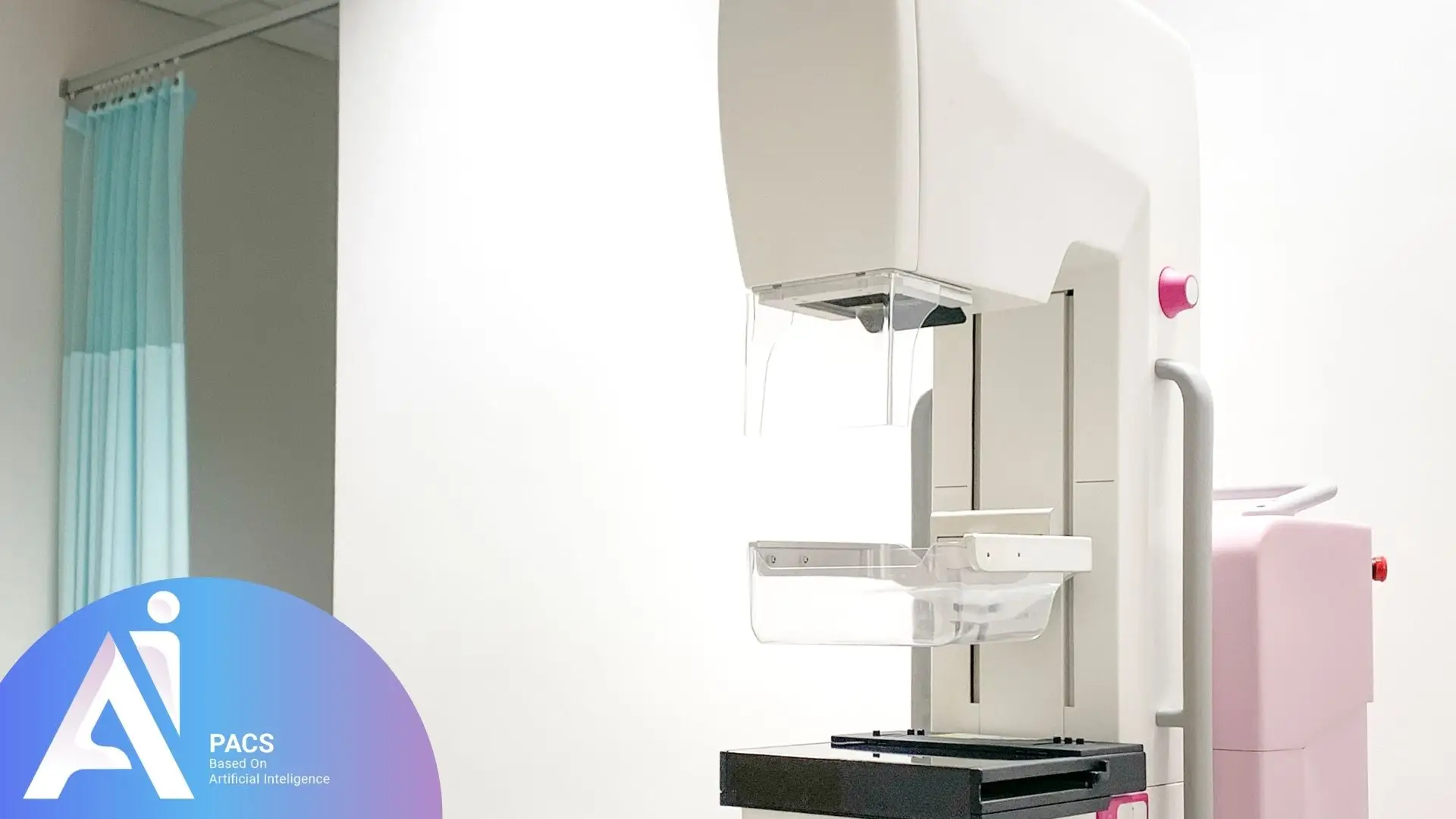Asymmetry in Mammogram: Understanding Its Implications and Importance
Asymmetry in mammogram findings indicates a difference in density, structure, or size between corresponding areas of the two breasts. While it can signal benign conditions like anatomical variation or hormonal changes, it may also require further investigation for potential issues such as cysts, fibroadenomas, or malignancies. Radiologists use additional imaging techniques to assess the significance of this asymmetry and rule out any risks.

Different types of asymmetry
- Simple Asymmetry
This refers to a difference in breast tissue density between the two breasts, often visible in both views of the mammogram. Simple asymmetry is usually benign and does not require further action unless associated with other abnormalities. - Focal Asymmetry
Focal asymmetry appears as a localized area of denser breast tissue visible in two different mammographic views. To rule out concerning causes, additional imaging, such as spot compression mammography or ultrasound, may be required. - Global Asymmetry
Global asymmetry is a more extensive density difference in a larger area of one breast than the other. This type is often associated with normal breast tissue variation but might need further evaluation if it is a new finding. - Developing Asymmetry
This occurs when asymmetry is not seen in prior mammograms but appears in subsequent imaging. Developing asymmetry is considered a red flag, as it may indicate a significant underlying condition, including malignancy. Radiologists typically recommend further diagnostic steps, such as a biopsy, for this type.
Each type of asymmetry requires a tailored approach to evaluation and follow-up to determine whether it represents a benign variation or a potential health concern.
Common Causes of Asymmetry in Mammograms
Non-cancerous causes
- Breast Density Variations
Differences in breast tissue density are common and often attributed to genetic factors or hormonal changes. Dense tissue can create asymmetry, especially in younger women. - Hormonal Changes
Hormonal fluctuations during the menstrual cycle, pregnancy, or menopause can temporarily alter breast tissue, leading to asymmetry in imaging. - Fibrocystic Changes
These benign changes result in lumpiness or uneven texture in the breast tissue, which may appear asymmetric on a mammogram. - Post-Surgical or Radiation Effects
Scars or tissue changes from previous breast surgeries, biopsies, or radiation therapy can cause localized asymmetry. - Normal Anatomical Variations
Slight differences in size, shape, or tissue distribution between breasts are natural and do not usually indicate health concerns.
Potential pathological causes
- Benign Tumors
Growths like fibroadenomas or lipomas may cause localized asymmetry, though they are typically non-cancerous and easily managed. - Breast Cysts
Fluid-filled sacs within the breast can create density differences, especially if they are large or concentrated in one area. - Inflammation or Infection
Conditions such as mastitis or abscesses may lead to swelling or tissue changes that appear asymmetric on a mammogram. - Developing Breast Cancer
Asymmetry, particularly a new or developing one, can be an early indicator of breast cancer, including ductal carcinoma in situ (DCIS) or invasive breast cancer. - Other Malignant Lesions
Rare conditions, such as phyllodes tumors or metastatic lesions, might also manifest as asymmetry and require immediate attention.
How Radiologists Evaluate Asymmetry in Mammogram Findings
Diagnostic tools and techniques
Radiologists use advanced imaging tools to assess asymmetry in mammogram findings. If asymmetry is detected, additional imaging techniques like spot compression or magnification views are employed for clearer images, helping to rule out artifacts or overlapping tissue.
Breast ultrasounds are typically used next to differentiate between solid masses, cysts, or normal tissue. For complex cases, breast MRI provides detailed three-dimensional imaging that can uncover abnormalities not seen in traditional mammograms.
If suspicious findings arise, a biopsy is recommended to obtain a tissue sample for analysis. Comparing current mammograms with previous ones is essential to determine whether the asymmetry is new, stable, or worsening, guiding further evaluation.
BI-RADS categorization and its role in assessment
The Breast Imaging-Reporting and Data System (BI-RADS) is a standardized classification used by radiologists to evaluate breast findings, including asymmetry:
– **BI-RADS 1 and 2** indicate negative or benign findings with no further intervention needed.
– **BI-RADS 3** suggests probably benign asymmetry, recommending short-term follow-up imaging.
– **BI-RADS 4** is assigned to suspicious findings, typically warranting a biopsy, and further categorized into subcategories (4A, 4B, 4C) based on the level of suspicion.
– **BI-RADS 5** indicates findings highly suggestive of malignancy, requiring immediate action.
– **BI-RADS 6** confirms known malignancy from a prior biopsy and guides treatment.
This system promotes clear communication among radiologists and healthcare providers for accurate diagnoses and effective patient care.
Does Asymmetry in Mammogram Findings Always Indicate Cancer?
Asymmetry in mammogram findings does not always indicate cancer. While it can be a sign of malignancy in some cases, numerous benign causes are far more common. The key to understanding asymmetry lies in differentiating between benign and malignant causes through careful evaluation.
Benign versus
Asymmetry in mammograms is often due to non-cancerous factors. Normal variations in breast density or tissue distribution can cause asymmetric findings, while hormonal changes during the menstrual cycle, pregnancy, or menopause may lead to temporary breast tissue alterations. Additionally, benign conditions like cysts, fibroadenomas, or scar tissue can create areas that mimic asymmetry. Radiologists can usually distinguish these benign causes from malignancies based on specific imaging features.
Malignant causes
Asymmetry in breast tissue can indicate an underlying malignancy, especially if it is new or different from previous mammograms. When linked to conditions like ductal carcinoma in situ (DCIS) or invasive breast cancer, asymmetry may also show other warning signs, such as architectural distortion, microcalcifications, or a palpable lump. Developing asymmetry is particularly concerning and requires prompt follow-up with additional imaging or a biopsy to confirm or rule out cancer.
When to Be Concerned About Asymmetry in Mammogram Findings
Asymmetry in mammogram findings is not always a cause for alarm, but certain situations warrant closer attention and further evaluation. Understanding when to be concerned can help patients seek timely medical advice and ensure early detection of potential issues.
Developing Asymmetry
A newly developed asymmetry compared to previous mammograms is often considered a red flag. This type of asymmetry could indicate changes in breast tissue caused by underlying conditions, including malignancies. Radiologists typically recommend additional imaging or a biopsy to determine the cause.
Associated Suspicious Features
Concern increases when other suspicious findings accompany asymmetry. These may include architectural distortion, the presence of microcalcifications, or a palpable lump in the breast. Changes in skin texture, nipple retraction, or unusual discharge are warning signs that necessitate immediate follow-up.
Persistent Focal Asymmetry
The focal asymmetry that persists across multiple views and imaging sessions may require additional diagnostic tests, such as spot compression, ultrasound, or breast MRI. Although it may be benign, the persistence of asymmetry without a clear explanation often calls for further investigation.
Symptoms or Risk Factors
If asymmetry is identified alongside symptoms like breast pain, swelling, or visible changes, or if the patient has a family history of breast cancer or genetic predisposition (e.g., BRCA mutations), a more thorough evaluation is essential.
Early follow-up with a healthcare provider is critical to determine the cause of the asymmetry and ensure appropriate treatment. Regular screenings and timely interventions are vital in effectively addressing potential concerns.
How to Reduce the Risk of Abnormal Mammogram Findings
Reducing the risk of abnormal mammogram findings involves proactive measures focusing on regular screenings and overall breast health. Following medical guidelines and adopting a healthy lifestyle can help minimize potential issues and ensure early detection if abnormalities do occur.
Routine screening guidelines
Regular mammograms are vital for the early detection of breast tissue changes. Women with a family history of breast cancer or genetic factors like BRCA mutations are generally advised to start screenings at age 40 or earlier. Screening frequency usually varies by age and risk factors, with most guidelines recommending annual or biennial mammograms for those aged 50 to 74. High-risk individuals may also benefit from additional imaging, such as breast MRI or ultrasound. It’s important to consult a healthcare provider for personalized recommendations.
Maintaining breast health through lifestyle changes
Adopting a healthy lifestyle can significantly reduce the risk of breast abnormalities. Key steps include:
- Balanced Diet: Eating a diet rich in fruits, vegetables, whole grains, and lean proteins can support overall health and reduce inflammation.
- Regular Exercise: Engaging in moderate physical activity for at least 150 minutes per week helps maintain a healthy weight, associated with lower breast cancer risk.
- Limiting Alcohol Consumption: Excessive alcohol intake is linked to an increased risk of breast abnormalities, so moderating or avoiding alcohol is advisable.
- Avoiding Smoking: Tobacco use has been associated with various health issues, including breast cancer, and quitting smoking promotes overall well-being.
- Breast Awareness: Regular self-examinations and awareness of changes in the breasts, such as lumps or skin changes, can help identify potential issues early.
By adhering to routine screening guidelines and making lifestyle modifications, women can actively reduce the risk of abnormal mammogram findings and maintain breast health. Early detection remains key to effectively addressing any issues.
Conclusion
Asymmetry in mammogram findings is common and not always a cause for concern. Understanding both benign and malignant causes, along with how radiologists evaluate asymmetry, can help reduce anxiety. Regular mammograms, timely follow-ups, and a healthy lifestyle are essential for breast health. By staying proactive, women can work with healthcare providers to address abnormalities early, improving outcomes and peace of mind. Early detection and preventive care are crucial for effective breast health management.
References:
